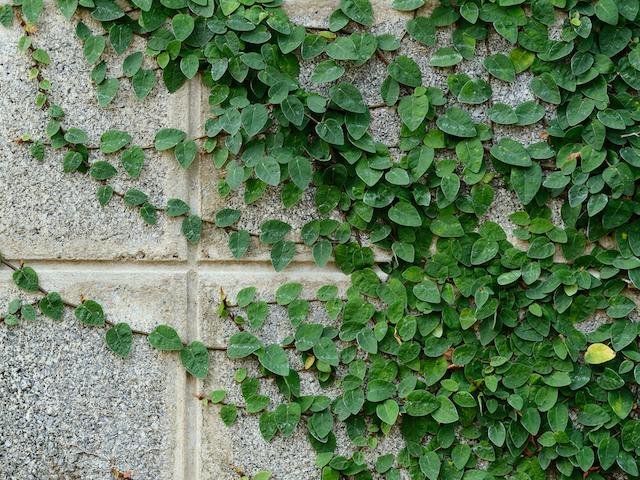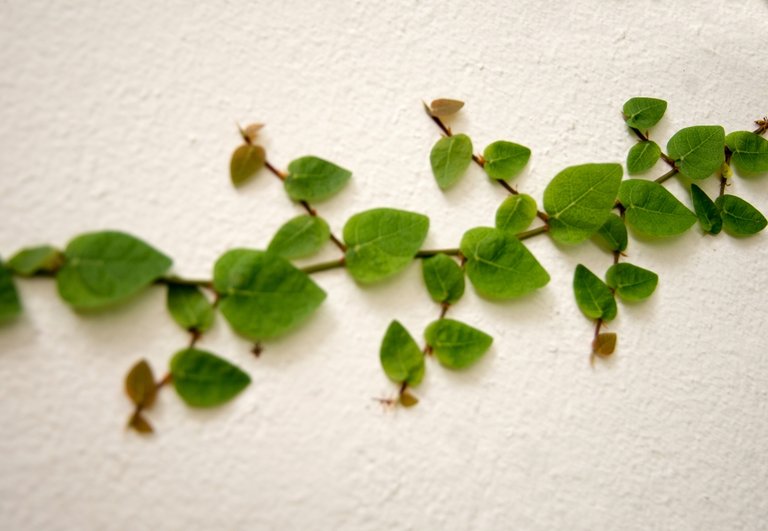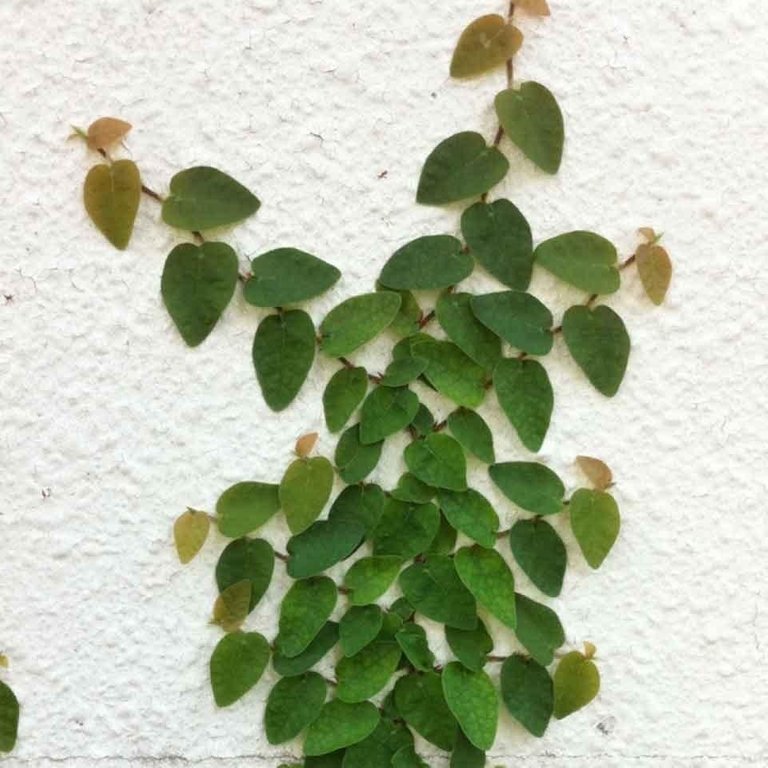Ficus pumila
(creeping fig)


Description
Top of page
The juvenile phase of this plant is morphologically different from the adult phase. Juvenile plant attaining several metres in length, much branched, climbing by means of adventitious roots; stems flattened; leaves 1.5-2.5 cm long, ovate to oblong, retuse at the apex, very closely spaced. Adult plant developing into a much branched liana, with adventitious roots, attaining 10 m in length; produces abundant white latex when wounded. Stems flattened, striate, tomentose, glabrescent when mature, with short pendulous branches. Leaves alternate, simple, 4-7 × 2.2-4 cm, oblong, oblanceolate, ovate, or elliptical, the apex obtuse, the base subcordiform, the margins entire; upper surface dark green, slightly shiny, with the venation notably lighter; lower surface light green, dull, with prominent reticulate venation; petioles 1.3-1.6 cm long, flattened on the upper surface, pubescent, light brown; stipules oblong-lanceolate to subulate, persistent, 1-1.2 cm long, brown, sericeous. Syconium green, pyriform, up to 6 cm long, soft (Acevedo-Rodriguez, 2005).
The species will form woody stems after several years of growth.
Distribution
Top of page
F. pumila is native to temperate and tropical Asia. It is a commonly cultivated species across Puerto Rico and is found in the El Yunque and Maricao public forests (Acevedo-Rodriguez, 2005). It is also widely cultivated in the Philippines and Melanesia (Madulid, 1995), as well as in Nepal and Indo-China (Nepal Checklist, 2014). In the USA, the species can be cultivated in parts of the southern and western coasts (Gilman, 1999).
